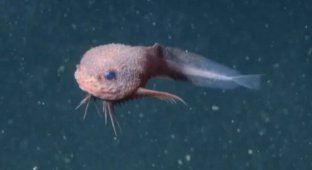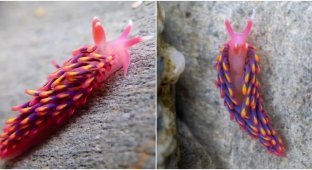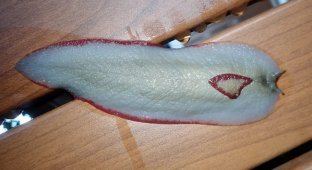Sea slug: a fish from the Mariana Trench at a depth of 8,000 meters (9 photos)
In their natural habitat, especially in the low-resolution images of deep-sea cameras, these fish truly resemble fat slugs of yellow, gray, or pink. 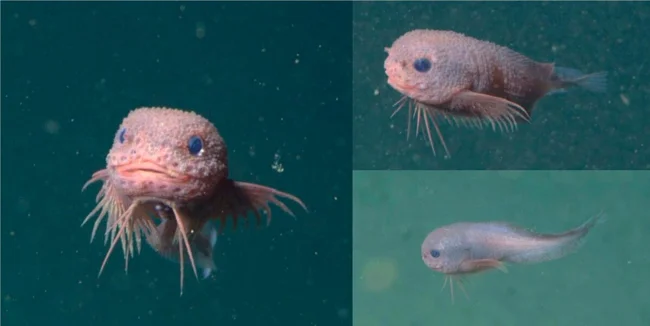
I don't know what this is, but judging by its face, it's a creature of inexhaustible optimism!
Absolutely all of them are scaleless, and their loose, porous, and gelatinous skin resembles the skin of cabbage munchkins. Add to this their ability to cling to corals with their ventral suckers, multiply this by their unique body shape, and you get some pretty successful slug imitators. 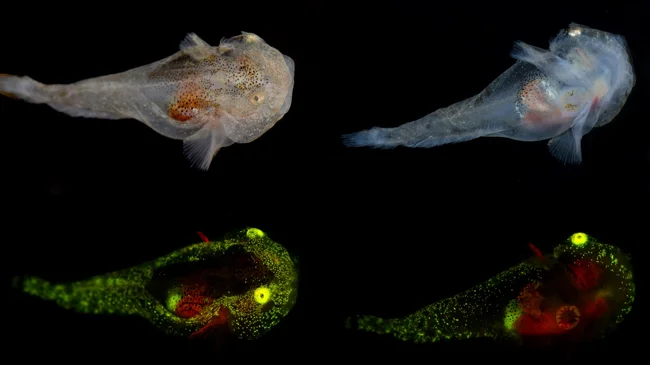
Some of these slugs even glow in the dark! 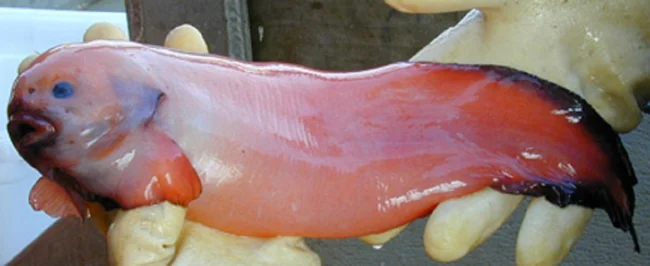
No, the sea slug hasn't been skinned; it really does look like that!
But dig a little deeper than its unusual appearance, and you'll discover a bizarre, yet widespread and numerous family of fish. 450 species inhabit the entire ocean, from the Arctic to Antarctica. Some inhabit coral reefs and coastal areas, but the vast majority of these pseudoslugs hide in the eternal darkness of the deep sea. The creature at the beginning of the article, for example, was found at a depth of 3,000 meters! 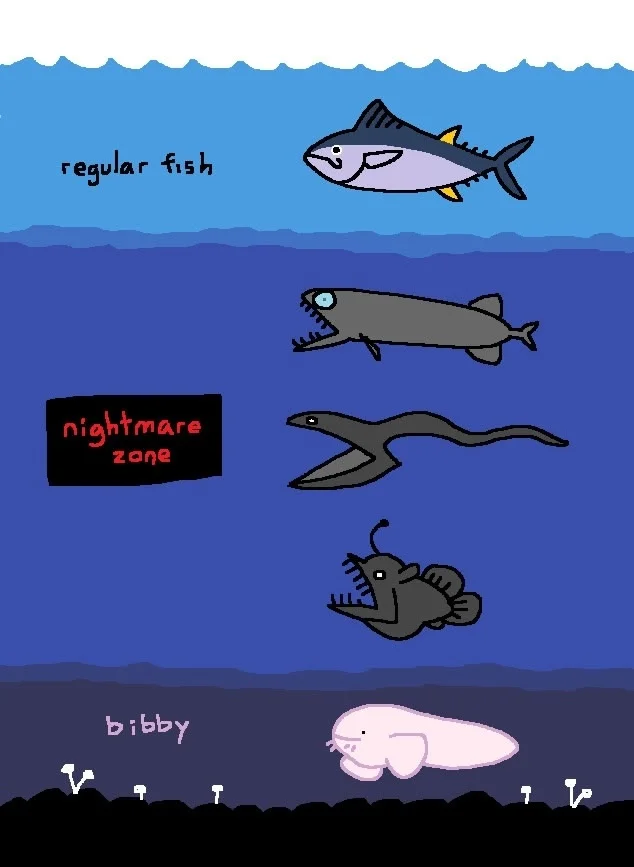
Contrary to popular belief, most creepy-looking fish live in the twilight zone at depths of 1 to 3 kilometers. The truly deep-sea creatures are the almost-cute slugfish!
And that's just the tip of the iceberg. Sea slugs are currently considered the deepest-sea fish on the planet: they were discovered in the Mariana Trench at a depth of over 8,000 meters! Even there, among polychaete worms and giant amoebas up to 10 centimeters long, they manage to survive and find food. 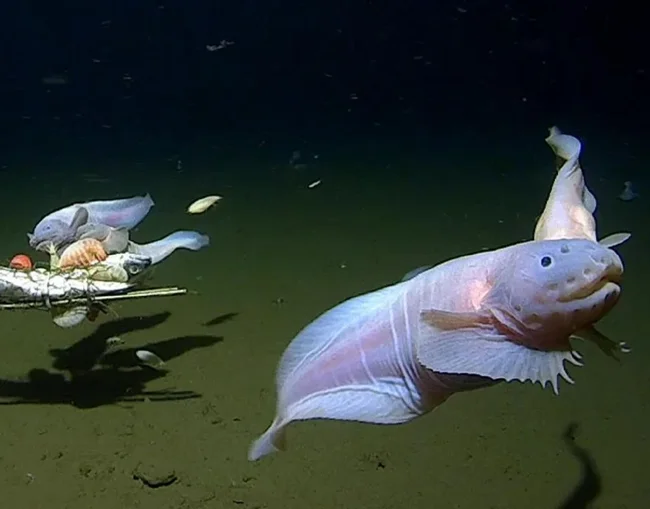
I'm sure you expected something more impressive to live at the bottom of the Mariana Trench. But here we are.
To be fair, it's not that hard for slugs to find food. Their young feed on plankton and microscopic crustaceans, while adults feed on larger crustaceans. They chase schools of krill, explore corals and rock debris, and even dig in the sand. Anything goes to fill their stomachs! 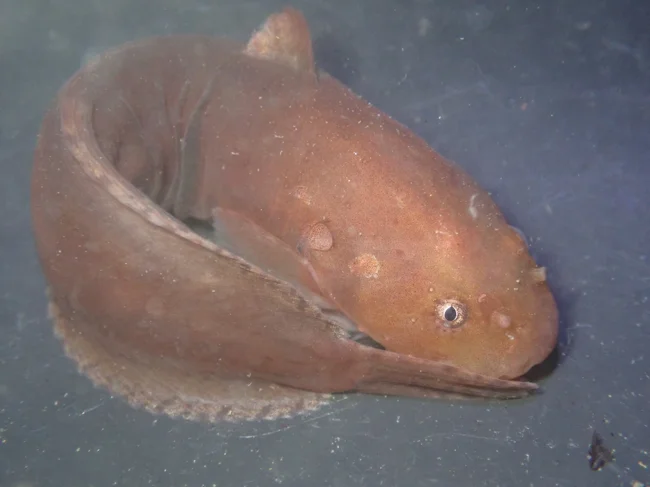
He's full and asleep!
When searching for food, they don't rely on sight or even smell—these senses, while not completely gone, have been significantly degraded. Fish slugs find their prey using touch and taste. Their wide heads with huge mouths are studded with neuromasts—complexes of sensory cells designed to sense water currents. Taste buds are located on the edges of their pectoral fins. Thanks to the former, they can chase escaping shrimp even in complete darkness, and thanks to the latter, they can locate amphipods in the sand by taste. 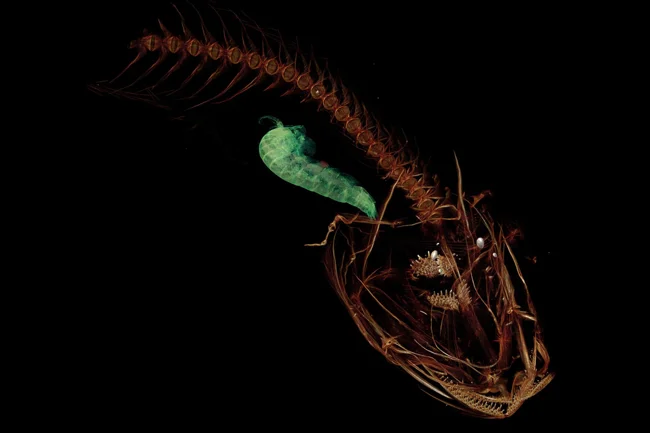
CT scan of a sea slug and its arthropod prey, right in the stomach.
However, it remains unclear how they find their mates in the pitch darkness. Do they spray tantalizing pheromones? Create seductive and gracefully swirling currents of water? Or do they simply congregate in specific spawning areas at the same time of year? This remains to be seen. 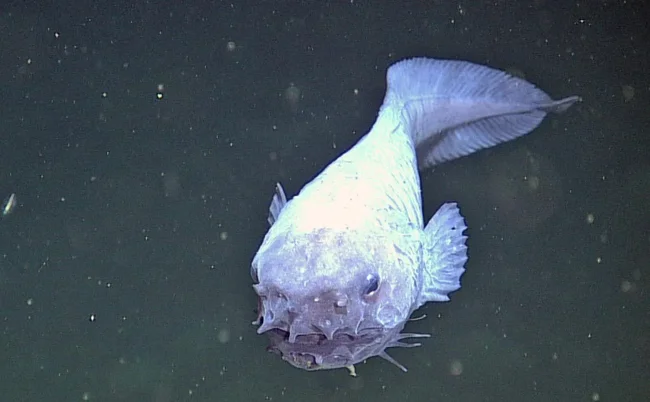
Just look at this handsome fellow, how could you not fall in love?
It's well known that when meeting females, males begin to bend their bodies, demonstrating either their flexibility or the unrivaled roughness of their skin. If the female is impressed by the male's movements, the pair retreat to a secluded spot to lay their eggs. Clutch after clutch of fertilized eggs, covered in sticky mucus, can be hidden in the most unexpected places: in kelp beds, in coral reefs, in the middle of a field of giant protozoa, or even in the gill cavities of king crabs. 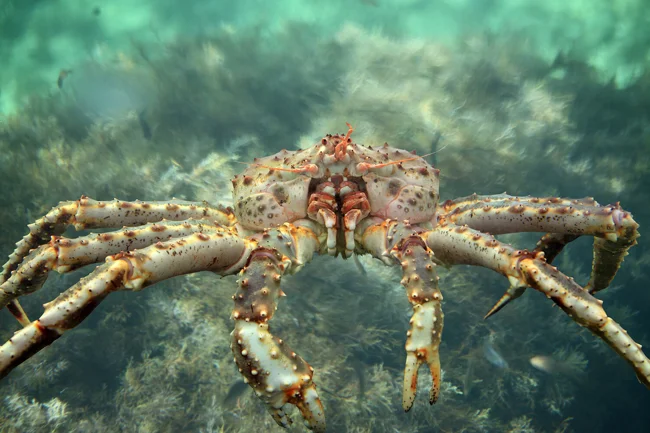
Where are you laying your eggs? GET YOUR FINS AWAY FROM ME!
The latter aren't particularly happy about this, as the eggs compress their gill tissue and can cause damage. But the sea slugs love it: their offspring are safe and surrounded by a stream of oxygen-rich water!












